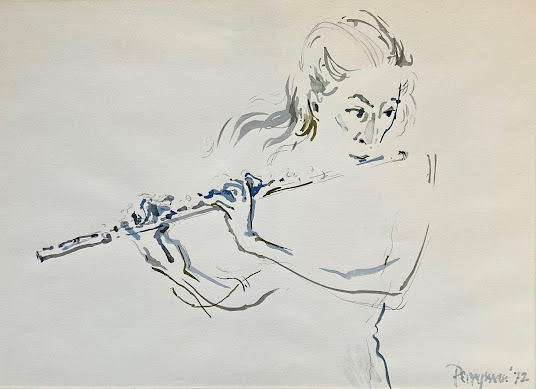A particular sadness hits me when I look again at my paintings of those who have passed away. Below is a watercolour study for a painting of Elaine Shaffer, in her day the veritable queen of the flute. I met her at the Menuhin Festival in Gstaad. She often performed with Yehudi and Hephzibah Menuhin and was very kind to me as I made sketches in 1972 for a large painting - that was not to be. I didn't know that in less than a year later this striking woman with the wonderful sound would die of cancer at 47.
A brilliant creative life cut short and a creative process (my painting) interrupted. Perhaps the minimal form of this study is therefore appropriate, incomplete as it is. I must be thankful that I was privileged to share just one brief session with this great musician and had to let go of what might have been.
As a dear friend reminded me yesterday - letting go is an art in itself, whether it be a failed relationship, the loss of a loved one, or even an experience that you know is designed to finish. Any performance falls into this category, as does my kinetic painting to music, that finishes when the music stops. Spectators used to holding on to a "finished" and framed painting, will tell me after performance: "but we wanted it to go on.... and there's nothing left!" Their comment reminds me that one of my aims in these performances is to practise and to share the "art of letting go". It really does take a lot of practice.
Here's a link to one of the Bach performances that I especially remember, with Elaine, Yehudi, George Malcolm (harpsichord) and Robert Masters, Concertmaster of the Bath Festival Chamber Orchestra. The video is dated 1959, but I heard this work with same ensemble at Gstaad in the sixties. She was wearing the same skirt and blouse!





